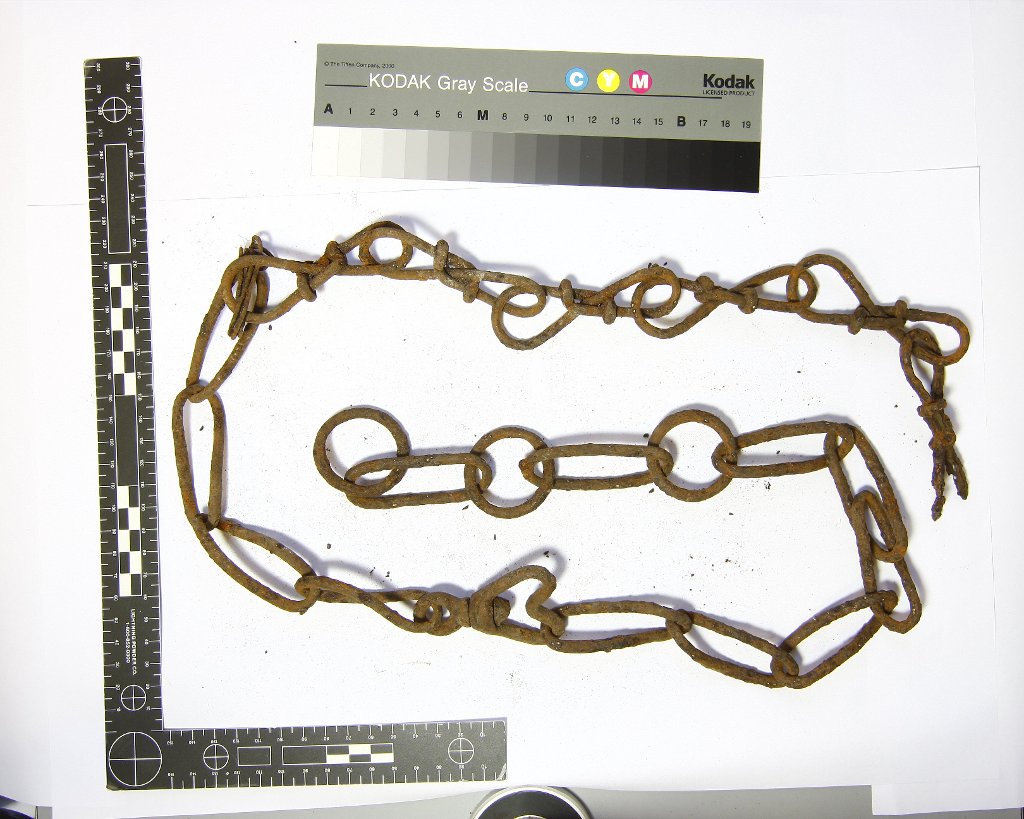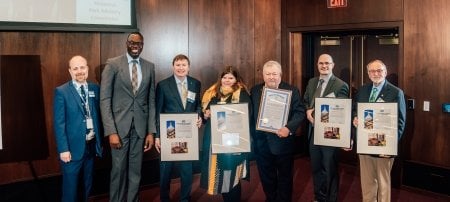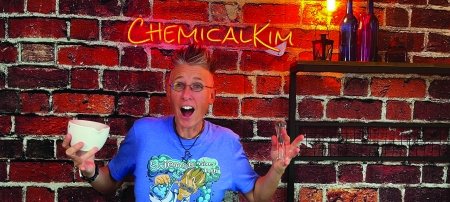Normally, we want to get rid of rust. But in industrial archaeology, old iron matters. Michigan Technological University researchers Tim Scarlett and Gerard Caneba have been working on new ways to better preserve iron artifacts. Scarlett, an archaeologist, and Caneba, a chemical engineer, are refining how to stabilize, consolidate and keep rusted iron pieces around longer, with less maintenance and for less money in the long run. Their latest work, funded by a National Park Service grant, continues to show the promise of supercritical fluid treatments.
Supercritical Fluid Treatment
In engineering, rust is a major threat. Bridges, cars, buildings—many of the items we take for granted in our daily lives—have to be protected from rust. Scarlett and Caneba are adapting those techniques to archaeology, where rust is the patina of history.
Supercritical fluid treatments are used to extract and coat. Basically, something like carbon dioxide is put under pressure, and above its critical point it becomes a supercritical fluid that behaves like both a gas and a liquid. That supercritical fluid can penetrate into pores; deep inside a metal artifact, it gets into the structure beneath the corrosion. Once effused into an object, the fluid dissolves water and other compounds into solution in the same way you can watch coffee dissolve sugar crystals. When the pressure drops, everything—including unwanted moisture trapped in the artifact—gets sucked out, leaving behind a dry object. If you include a polymer in the supercritical fluid solution, you can also leave behind a very thin protective coating.
“You’re left with an object that is completely dry, it’s completely sealed against reabsorbing atmospheric moisture,” Scarlett explains. “But we also haven’t altered the object or changed its appearance and can reverse what we’ve done.”
Extracting that water is half the battle against corrosion. That internal dryness allows the piece to be stored at normal room conditions, something that is currently undesirable because ambient humidity encourages rust. The impregnated polymer can also last much longer than a simple surface coating, saving both time and money while also helping preserve the artifact for future generations.
Iron Conservation
Industrial archaeology deals with artifacts, documents and material evidence on sites from the Industrial Revolution through the modern era. That means there is a lot of old metal.
A nineteenth-century padlock recovered from excavations at town of Clifton at the Cliff Mine location in Keweenaw County, Michigan’s Copper Country. This lock is an ideal candidate for the new treatment because it is fragile and parts lack any remaining solid iron, but it is not contaminated with salts.
Scarlett says he would never start out testing a new preservation method on critical artifacts.
“Conservators are very cautious people, and this technique is experimental, so we need to prove it is safe and effective for the long term,” he says, adding that his team starting testing on artifacts like nails, machine bolts and other scrap metal.
"The ethical needs for heritage materials are particularly interesting—they’re different from the regular world because we don’t want to alter these objects and change their original composition or form."Tim Scarlett
The supercritical technique will allow large numbers of corroded objects to be stabilized quickly and cost effectively. For example, iron artifacts currently need to be stripped of their corrosion coating, dried, given a stable patina, and sealed against moisture. That coating must be monitored and re-applied every few years. Scarlett and Caneba’s approach could dramatically extend the sealant’s lifespan, and the coating is so thin that build-up would not be an issue.
To the Sea and Beyond
The biggest remaining question is how the technique could be adapted to extract chloride salts—revolutionizing fieldwork for shipwreck sites and maritime archaeology—as well as extracting or encapsulating hazardous materials that could make handling artifacts from contaminated sites much safer.
“With historical artifacts, some may be contaminated, like artifacts recovered from excavations along the cove at the West Point Foundry of Cold Spring, New York, or the Quincy Smelter complex in Michigan’s Copper Country. Others may be impregnated with salts, like the famous ships USS Monitor and CSS H L Hunley.” Scarlett says. “Even in their decayed state, they are very important.”
So, Scarlett works on nails and chains for now, knowing that someday he could help save artifacts of America’s industrial heritage as brownfields become greenfields. The supercritical fluid treatments could save critical history.
This research was developed under a grant from the National Center for Preservation Technology and Training, a unit of the National Park Service. Its contents are solely the responsibility of the scientists and do not necessarily represent the official position or policies of the National Park Service or the National Center for Preservation Technology and Training.
Michigan Technological University is an R1 public research university founded in 1885 in Houghton, and is home to nearly 7,500 students from more than 60 countries around the world. Consistently ranked among the best universities in the country for return on investment, Michigan's flagship technological university offers more than 185 undergraduate and graduate degree programs in science and technology, engineering, computing, forestry, business, health professions, humanities, mathematics, social sciences, and the arts. The rural campus is situated just miles from Lake Superior in Michigan's Upper Peninsula, offering year-round opportunities for outdoor adventure.








Comments